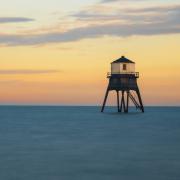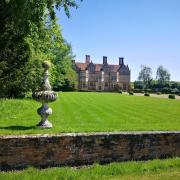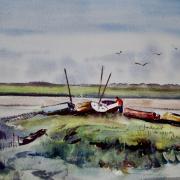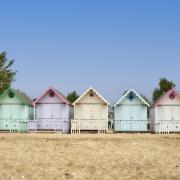Discover the tale of The Moot Hall, which has been at the heart of this historic town since the 15th century
The Moot Hall in Maldon, a Grade I-listed building, originally formed a part of local MP Sir Robert D’Arcy’s townhouse that he commissioned back in the 15th century. The original Moot Hall of Maldon was a medieval building and stood in a different location on Silver Street. Today’s Moot Hall was originally a brick extension to the timber-framed manor house that Sir Robert built, known as D’Arcy mansion. Sir Robert D’Arcy has been described as one of the most powerful men in East Essex who was keen to make his mark and build an impressive house.
He married an heiress, Alice FitzLangley, and then set about building his dream home. The Moot Hall is laid out over three floors and forms a tower. It was built in red brick laid in English bond with brick walls 2ft thick. D’Arcy even built a brick staircase, which is quite a marvel. This obsession with building in brick was all on purpose: few could afford to build with bricks; it was a modern and expensive phenomena. D’Arcy would have wanted his new building to stand out. He was making a statement by building this house – that he was rich and powerful.

After Robert passed away in 1448, his son, Sir Robert, the eldest of seven children, inherited the house. The house deteriorated after the death of Sir Robert’s son in 1508. The timber part of the mansion was divided into three lots and sold off in 1536, and the remaining brick tower that we see today was then acquired by the local bailiff, John Church, three years later.
When John Church passed away in 1554, the building fell into disrepair and was bought by the Borough Corporation in 1576 for £55. This heralded a new chapter for the building as the old premises on Silver Street were done away with and the municipal business of Maldon were now dealt with there on the High Street. Court hearings and civic meetings were all held at The Moot Hall.
On the ground floor of The Moot Hall there is a tetrastyle portico (a porch with four columns). The Doric (ancient Greek architecture) columns support a modillioned canopy (an ornately carved overhead roof structure). At the base of the portico are two doors with fanlights overhead and a blind central alcove, which is a blind recessed section built into the wall.
On the first floor, two full-height sash windows open out onto the roof of the portico, also doubling as a balcony, complete with iron balustrades. It isn’t hard to see why The Moot Hall is regularly used as a location for weddings. Indeed, many happy couples have chosen the balcony as a top spot to pose for a photograph flanked by the pretty coastal town of Maldon.
READ MORE: Why you should visit Maldon in Essex

On the top floor there is a single sash window, and above it, a castellated tower. If you are after a great view, climb to the top floor to see a stunning 360-degree view of the Blackwater Estuary below. Within it there is a spiral staircase that spirals anti-clockwise with a larger chamber and a smaller anti-chamber on each floor. The local MP George Courtauld bestowed a clock to The Moot Hall in 1881, which hangs above the balcony and chimes every quarter of an hour completing the first bars of Handel’s My Redeemer Liveth. Inspired perhaps by Courtaulds’ largesse, a belfry was installed on the bell tower roof at the same time, complete with five bells.
The Moot Hall also served as a prison, and on the ground floor the prisoners were kept in a small bailiff's gaol. The accommodation wasn’t roomy, but the prisoners were allowed out in the yard to exercise. By 1836, times had changed, and The Moot Hall served as the police station, and the Maldon Borough Force joined the Essex Police Force before being transferred to the new purpose-built police station in West Square in 1912.
The ground floor was subsequently used as the Mayor’s Parlour and Committee Room and the first floor served as a Magistrate’s Court until 1950. The second floor was used as a council chamber for meetings of the Borough Council. This room now seats up to 30 guests for a special event such as a wedding. Each room has a very different feel to it and very much had its own purpose in its day. The first-floor anti-room was used as a Jury Room and the one on the second floor was the Muniment Room, used to store the Borough’s most important documents.

Maldon Borough corporation was dissolved in 1974, and the town council took on the ownership of Moot Hall in 1983. In 1999, the town council had a new town hall built, and subsequently the Moot Hall has become a vibrant centre for social history, leased by the charity Friends of the Moot Hall.
If you pay a visit to The Moot Hall, don’t forget to seek out some fabulous works of art, including portraits of King George I and Queen Anne by the studio of artist Godfrey Kneller, as well as a portrait believed to be of Elizabeth Throckmorton, wife of Walter Raleigh by Robert Peake the Elder.
Elizabeth Throckmorton was Gentlewoman of the Privy Chamber to Queen Elizabeth I and an important courtier of her day. She was thrown into the Tower of London for secretly marrying Walter Raleigh. For history lovers, there are occasional historic events held at The Moot Hall, and it is worth checking the website for more details.
themoothall.co.uk



























